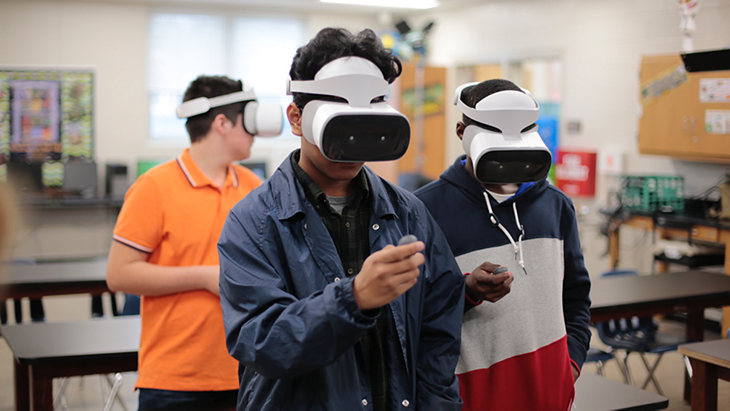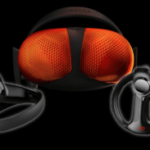Immersive education presents a safer, more effective alternative to conventional learning.
Training and education barriers exist at all levels of education—from primary to post-secondary students and on through these student’s careers into Enterprise and business training programs. Enterprise training programs at every level are often associated with feelings of dread rather than an important tool in keeping employees safe and setting them up for success. And in higher risk industries, having efficient and effective training is of utmost importance. The ideal training program safeguards employees in higher stakes cases, and ensures people have the right response in a situation through their training recall.
VR training programs drastically improve a user’s ability to understand and retain content compared to the traditional methods of textbooks and desktop learning. While investing in VR education and training applications may seem unnecessary, time-consuming, or just a “nice to have”, immersive technologies can play a large role in educating students and employees efficiently and effectively. So, let’s explore how exactly immersive technology can make a difference in a student’s learning journey.
VISUAL LEARNING
The way that certain material is taught and presented can make a significant difference, especially when it comes to learning abstract concepts that are new, foreign, and unfamiliar to students. One early study conducted by Mehryar Nooriafshar, Tek Narayan Maraseni, and Ron Williams explored the effects of how VR education could be a useful tool in helping students learn content more effectively. Researchers gave a tutorial on topics related to basic human anatomy to two groups of students from two very different backgrounds: nursing and business.
In the end, 88% of students reported enjoying their VR experience more than studying diagrams from a textbook. Participants also stated that they found it “easier to learn by visible examples rather than textbook” and that immersive technology helped them “see where [various parts] are in relation to other[s]”. These results are similar to findings from a 2018 study conducted at the University of Maryland, during which VR learning was key in helping participants retain information. It’s also supported by the anecdotal evidence we hear from our architecture and design clients daily, where VR is critical to understanding size and scale; the ratio of how things fit, and their relative size are far more clear in VR than other media.
Findings from both of these studies clearly indicate how visual learning is a key factor in the modern education process. VR helps put various bits and pieces of information into a larger perspective, giving more context to enrich a student’s understanding and improve people’s overall learning capabilities and retention.
“This data is exciting in that it suggests that immersive environments could offer new pathways for improved outcomes in education and high-proficiency training” – Amitabh Varshney, Professor of computer science and dean of the College of Computer, Mathematical, and Natural Sciences.
ENJOYMENT = BETTER LEARNING
Designers of children’s educational programming, apps, and video games know a basic truth: when people are entertained by the material, they are more likely to retain said information. Also known as Edutainment, the combination of education and entertainment can play a large role in helping students gain a deeper understanding of theoretical subjects. The bottom line is that when students are engaged, perhaps even without knowing it, learning new material becomes a lot less painful.
One aspect that sets VR apart from other mediums of learning is its interactivity. Users are transported into a digital environment where they can complete a series of tasks, answer questions, and interact freely with their surroundings. Compared to studying a manual where reading can often be laborious, using VR for educational or training purposes offers a high-definition platform in which students learn while they play.
SAFETY IN PRACTICE
As discussed, VR’s immersive capabilities can provide effective and memorable training for a variety of education levels. In addition, VR also provides a safe environment for employees working high-risk jobs to learn the adequate health and safety training required to perform their duties, whether it be learning how to diffuse tense situations or the operation of large vehicles.
When it comes to industries like construction or mining, even the smallest mistake can end up putting you and everyone else around you at risk. While current training programs may include a seminar presentation, role-playing, and a list of scenarios, very few offer hands-on education. VR-based safety training, on the other hand, gives employees the confidence to explore and make mistakes in a safe virtual environment.
VR EDUCATION & TRAINING
Educators are always looking for better ways to engage with students and employees. Virtual learning immerses users in their content, resulting in higher retention rates. The nature of VR also means that people are better able to focus, experience content at their own pace, and do so from a more memorable first-person perspective. Long story short, VR is poised to be a significant disruptor to education and training.
Image Credit:
The post Education’s Next Big Leap: Immersive VR Education For Better Learning appeared first on VRScout.




